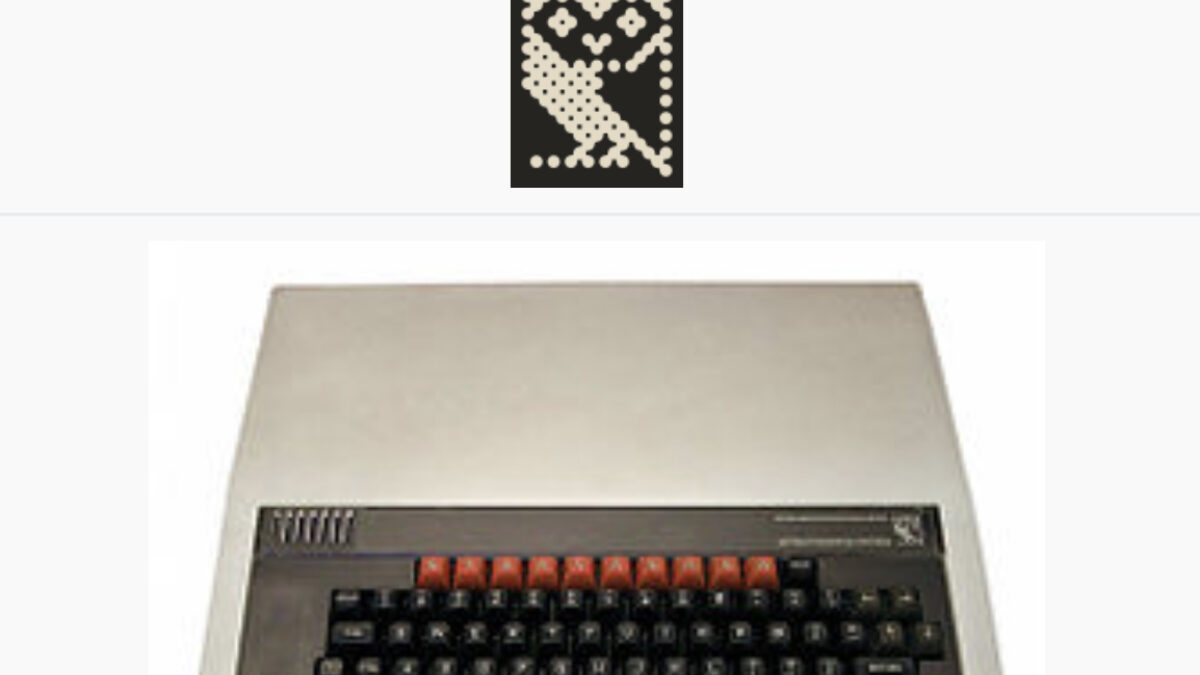History of Computing: The BBC microcomputer

By Fay Capstick
For many who grew up during the 1980s and 1990s a BBC microcomputer would have been a familiar sight in the classroom. This week we will be telling you everything you need to know about this hugely important piece of computing history and the impact that it has had.
What is the BBC micro computer?
The British Broadcasting Corporation Microcomputer System, or BBC micro, refers to micro computers designed and built by Acorn Computers for the BBC Computer Literacy Project. It was designed to be used in a school environment, and is therefore rugged and reliable. It was first released in 1981.
Most schools in the United Kingdom had a BBC microcomputer.
Acorn won the bidding process to develop the machine, which was a successor to its Atom computer. The BBC micro was huge for Acorn, with nine models and a total of 1.5 million computers sold before it was discontinued in 1994.
Why was it made?
This was partly as a result of an ITV television documentary predicting the rise of the microcomputer and the huge positive effect that this could have on the economy.
The BBC wanted a microcomputer that they could use to demonstrate tasks in their programme, The Computer Programme (1982). This series was presented by Chris Serle and was on BBC2. The series showed Serle learning to use the machine to do various tasks including programming, graphics, sounds and AI. Further BBC TV series on using the BBC Micro ran until 1987.
This then evolved into the idea of developing a microcomputer which could have a wider impact on the population. The BBC faced criticism, which is hard to understand now, about the fact that they were promoting a commercial project.
What impact did it have?
While technically being released at the end of 1981, production delays meant that machines only really started to be delivered in 1982. Huge demands meant long delays in receiving the product.
It was nicknamed the ‘beeb’ and the majority (80%) of British schools had one. They were a very familiar sight in the classroom and were the first computer that most children in the 1980s experienced.
In a little known fact, ITV were also interested in pursuing a similar idea after seeing the popularity of the BBC’s microcomputer. The ITV Micro was actually developed but never released.
Worldwide impact
As well as being a familiar sight in UK classrooms, the BBC micro was marketed in the United States and by 1984 had sales of $21 million. The high quality of the educational software, lessons plans, and workbooks available gave the machine an edge over competitors. By 1984 there were 1000 dealers of the BBC acorn microcomputer in the US.
Sales were also strong in West Germany.
Other countries, such as India, produced clones of the BBC micro for their computer literacy efforts and several thousand were produced there a month by 1985. Mexico was producing 2000 a month.
From an expected sales projection of 12,000, 1.5 million were eventually produced and sold worldwide.
What about home users?
The BBC microcomputer came with a high price tag (approximately £1600 in today’s money), so it wasn’t an option that was likely to catch on for home users when cheaper competitors, such as the ZX Spectrum and Commodore 64, existed.
Acorn tried to compete with these competitors by introducing the 32K Acorn Electron. This was a simplified microcomputer designed for home use and would complement the model used in schools.
Software
The BBC microcomputer eventually had a large offering of software, both educational and games, including the original Elite game.
An optional Teletext Adaptor meant that tele software could even be downloaded.
BBC Basic was the main language used.
Peripherals
Some of the peripherals that you might have seen in schools of this time include joysticks, floppy drives, tape recorders, networking upgrades, speech synthesisers and the teletext adaptor.
Given that the potential customer base was so large, companies other than Acorn produced extra products that worked with the BBC Micro. These extras included RGB monitors, printers and modems.
Retro computing
There is an active retro computing community who try and find tasks for the old computers. BBC Micros can also be found in museums (including the Science Museum, London) in the UK, and some of these displays are interactive.
Amazingly, there are websites dedicated to development of hardware and software for these machines.
Wider use
The BBC Micro was used outside of schools too, and you might be surprised to learn that many popular music artists in the 1980s used the machine to compose their work. This list includes Depeche Mode, Erasure, Yazoo, Queen and A-Ha.
The machine was also used to help produce the graphics for many BBC TV shows in the 1980s, such as Dr Who.
Conclusion
The BBC Micro had a huge impact on a generation. Many of us fondly remember it from primary school and had no idea the efforts that had gone into producing it and how revolutionary it was.
The impact in education was huge, particularly in education software where it set a benchmark in quality. It also made Britain, at the time, probably the most computer literate nation in the world. The lasting impact should not be underestimated.
Final thoughts
At Parker Shaw we have been at the forefront of the sector we serve, IT & Digital Recruitment and Consulting, for over 30 years. We can advise you on all your hiring needs. If you are looking for your next job in the IT sector please check our Jobs Board for our current live vacancies at https://parkershaw.co.uk/jobs-board.
